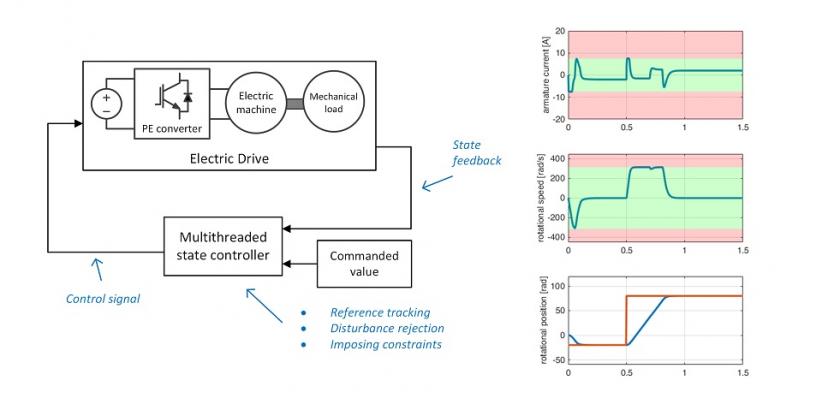From a research grant to a patent: a multithreaded controller for energy conversion systems in electromobility
The construction of control systems in power electronic transformation systems employs two control methods utilising a cascade control scheme with feedback from individual object outputs and controllers with feedback from the vector of variables of an object state. And what if these two concepts are merged? Researchers at the Faculty of Electrical Engineering at the Warsaw University of Technology have undertaken this task.
In most cases, apart from closely monitoring the setpoint and suppressing interference, a practical control system for electrical drives should effectively reduce the scope of changes in selected variables of the object state. Without an effective method of lowering amperage, for instance, a control system cannot be used in practical applications. For this reason, industrial systems more frequently utilise the cascade control scheme method, which effectively facilitates imposing constraints on the variables of the object state, leading to more effective operations than in the case of feedback from the state vector.
‘Our research focuses on devising a control method which simultaneously facilitates using the controller with feedback from the state vector and imposing constraints directly on the individual state variables and control signal without making calculations based on the object model,’ says Marek Michalczuk, D.Sc.
Members of the research team at the Warsaw University of Technology: Marek Michalczuk, D.Sc, Bartłomiej Ufnalski, PhD, DSc, and Professor Lech Grzesiak, DSc described their initial findings in the paper Imposing Constraints in a Full-State Feedback System Using Multithreaded Controller, in which the researchers focused on the validation of the location controller with the constraints of rotational velocity, armature current, and control signal.
Research shows that in the method devised by the researchers at the Warsaw University of Technology it is necessary to design controllers with feedback from the state vector in a number equal to the number of state variables under control. At the same time, it is recommended that the signal provided to the controlled object be selected properly from the outputs of the designed controllers.
‘Proper selection of the control signal is key to achieving a high quality of control in transition states,’ explains Marek Michalczuk, D.Sc.
It is the first time such a simple mechanism of effective implementation of constraints with the help of controllers with feedback from the state vector has been used in the field of electromobility.
The method has great potential for development and a wide range of applications. ‘It can be applied in and significantly improve the systems, for example, intended for stabilising the trajectory of a car when taking a curve or preventing the wheels of a vehicle from skidding during accelerating,’ says Professor Bartłomiej Ufnalski.
The researchers at the Warsaw University of Technology have applied for a patent of the solution they designed.
The project ‘Multithreaded controllers for energy conversion systems in electromobility’ is funded as part of a research grant of Priority Research area Energy Conversion and Storage.


